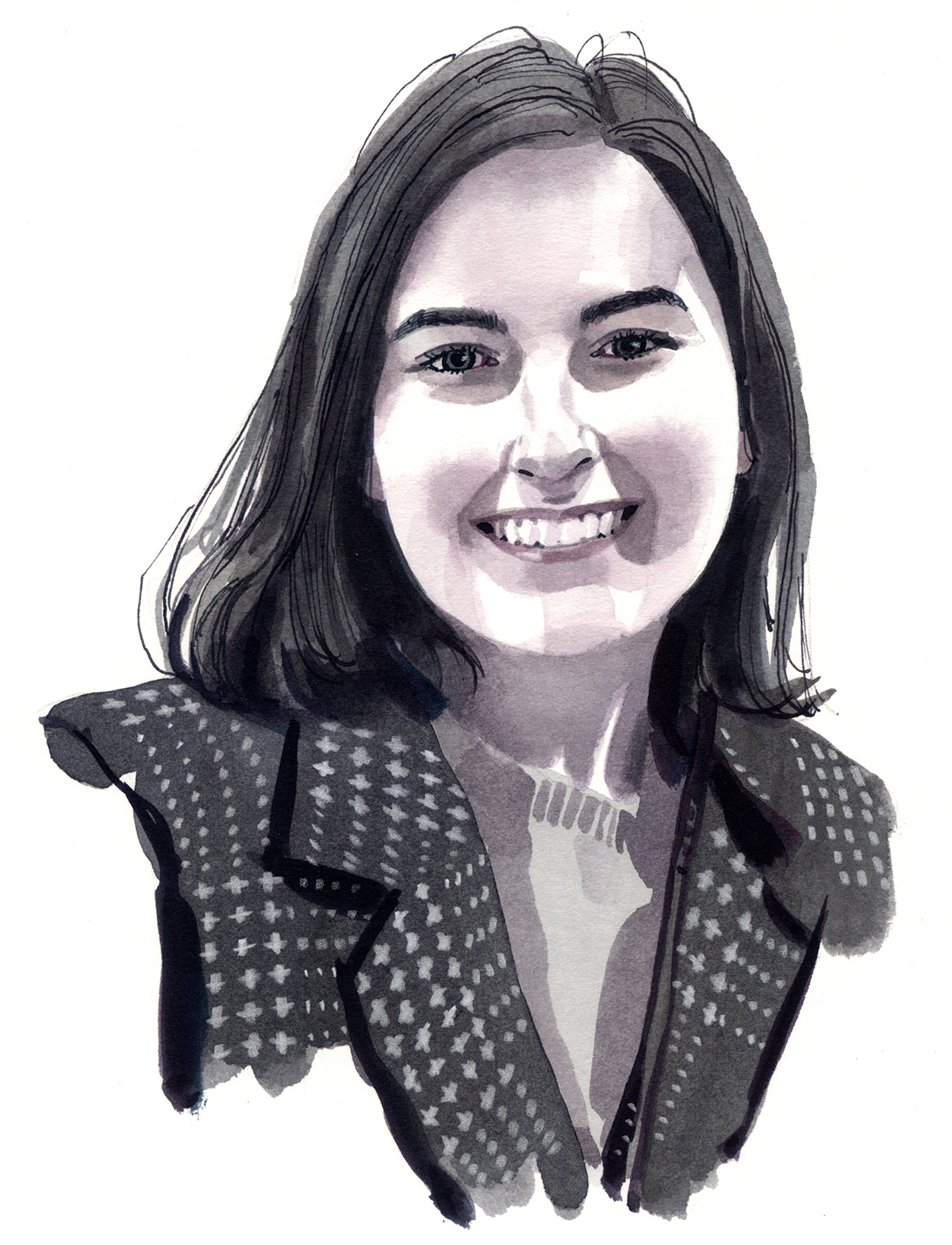Elizabeth Theban’s Thesis Focuses on How “The Fox” Changed Art Criticism
A short-lived ’70s journal that used Marxist ideology had a significant influence on the art world.

Illustration by Matthew Cook
Elizabeth Theban’s Thesis Focuses on How “The Fox” Changed Art Criticism
A short-lived ’70s journal that used Marxist ideology had a significant influence on the art world.
Capitalism and art have always been strange bedfellows. But the uneasy relationship between creativity and profit hadn’t been examined in depth until the counterculture started dissecting Western norms in the 1960s.
Elizabeth Theban ’20 MA zeroed in on when the philosophical scrutiny first appeared in the U.S. art world. The subject of her thesis is a three-issue publication, The Fox. Compiled by a collective of 1970s Big Apple artists known as Art & Language New York, the journal opened new possibilities for how artists critique their industry.
The editors expanded on a fundamental redefinition of art that started with French painter and sculptor Marcel Duchamp. His conundrum — is art an idea or a commodity? — filtered through the 1960s into a United Kingdom group known as Art and Language. Venturing into a territory of expression known as conceptual art, the British group dissolved the barriers between words and pictures.
New York Art Scene
In the 1970s, a companion conceptual-art faction formed in New York City. Meeting in language-based artist Joseph Kosuth’s apartment, members aired grievances against the hierarchical art world and strategized how to forge a new path for the city’s art scene. Art & Language New York decided to funnel its collective thoughts into The Fox.
More than 40 years after its publication, Theban dissected all 300 pages of the journal’s run. She traveled to the Getty Museum in Los Angeles with assistance from TCU’s Sunkel Art History Endowment to parse the group’s archives and met with founding member Michael Corris, now a professor of art at Southern Methodist University in Dallas.
“Conceptual art is a kind of work that allows you to critically examine how art is produced, how art is distributed and how it’s received and consumed … and the possibilities for revising all of those things. … The Fox allowed the idealistic young editors to focus some of our thoughts on what it meant to be an artist in New York at that moment,” Corris said.
“Even though they had a lot of ideas of what was wrong, they don’t quite have the right answers either.”
Elizabeth Theban
Consumer capitalism “doesn’t prepare you with the tools that you need to challenge it. Those aren’t going to be supplied by the same ideology of consumption,” Corris said. “So you have to look elsewhere, and that’s what The Fox was doing — looking elsewhere.”
The journal was purposely printed in plain academic style, mostly text. Intended to appeal to anyone with an interest in philosophy or art, the publication could be purchased in art galleries for $2.50.
The group of artists-turned-editors, including Kosuth, Corris and Sarah Charlesworth, presented their ideas as a united front. Their words often outlined problems with buying and selling creative work.
“Even though they had a lot of ideas of what was wrong, they don’t quite have the right answers either,” Theban said. “There’s a lot about how the capitalist system is devaluing artists and their work. Even though their work is worth money, the labor of the artists is not.”
The group also criticized the individualism dominating the industry. Attempting to operate much like a Marxist labor union, members discussed exhibiting only as a collective. The community, they believed, was everything, and any hope of creating a different course would require people to work together.
“They were very much socialists,” Theban said. Their philosophy-based critique of how 20th-century art worked, she said, was “very innovative for the time.”
The Fox
Theban is among a handful of art history scholars to study The Fox in such detail. Despite its limited readership, she said, the journal opened new options in how art could be critiqued and by whom. Art criticism by artists remains popular in the 21st century in publications inspired by The Fox, including New York’s now-defunct Village Voice.
Art & Language New York couldn’t withstand the divergent philosophies that tore most counterculture efforts apart. Members “ranged from Marxists to Maoists to anarchists,” Theban said. “And those are all very different approaches.”
“I think that a lot of what The Fox was doing was discussing community needs and how to meet them.”
Elizabeth Theban
And over time, Corris said, those hard-left approaches softened. “You’ve got to work with people of different persuasions, and you’ve got to develop some common ground with them to get things done. This is a lesson I learned later on in my life.”
Theban hopes to become a curator at an art museum. While she won’t necessarily copy the collective’s style and run exhibitions of conceptual works, she said she will apply key takeaways from her research.
“I think that a lot of what The Fox was doing was discussing community needs and how to meet them,” she said. “That’s going to be helpful for me, thinking about the community and how to invoke practice that will be beneficial to the community.
“That’s a lot of what smaller galleries and museums are trying to do. They’re trying to change the system and work with smaller artists and get them more publicity.”

Your comments are welcome
Comments
Related reading:
Features, Research + Discovery
Don Greenwood Explores How Social Workers Can Help Stop Human Trafficking
Advocates can better link survivors with new sources of support.
Features, Research + Discovery
Kristof Pota Manipulates Metals to Treat Alzheimer’s
The chemist also uses metals to better the contrast agent for MRIs.